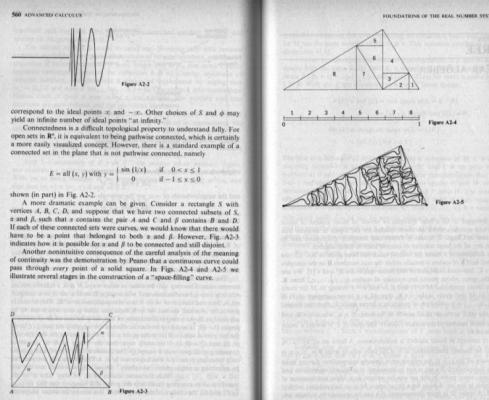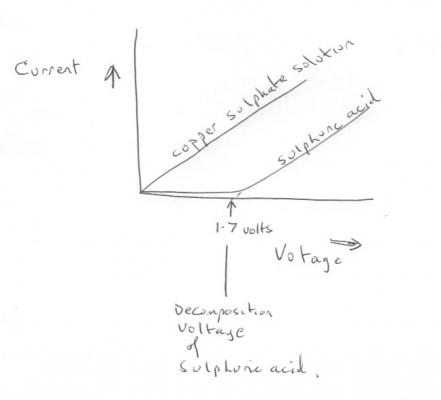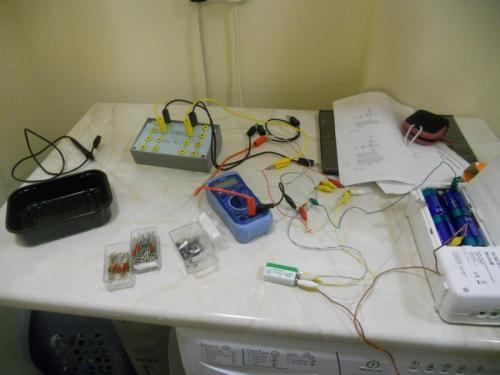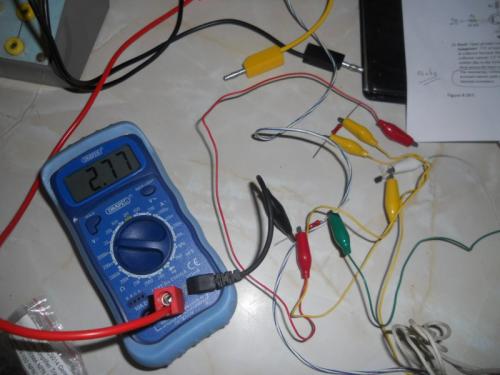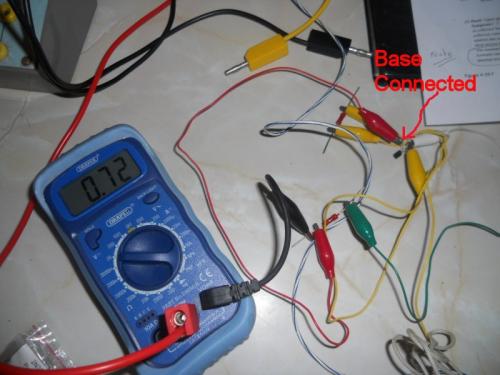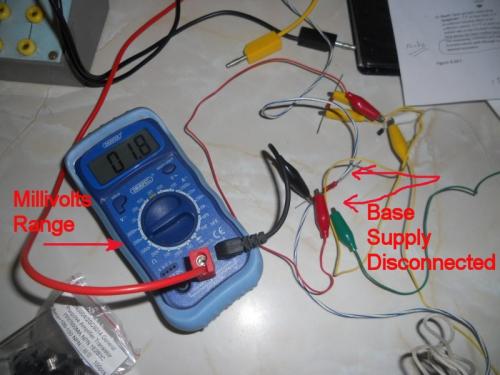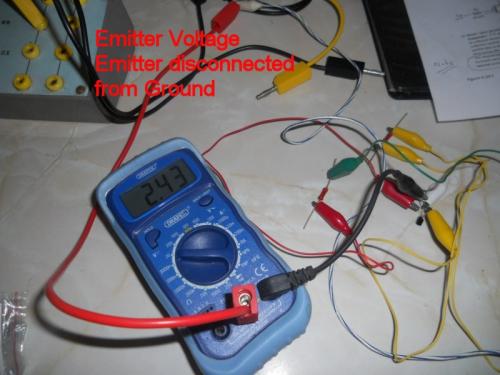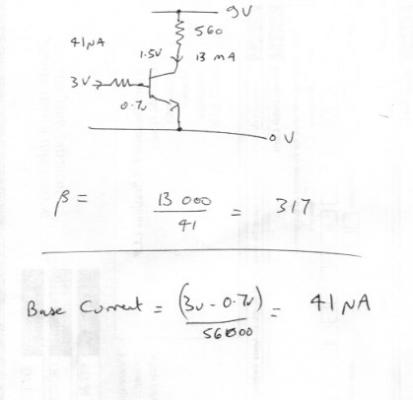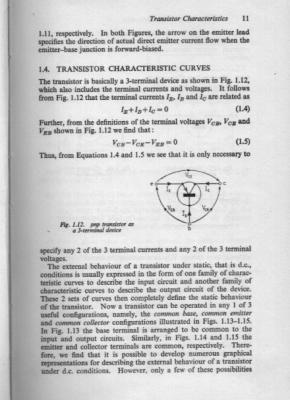-
Posts
18270 -
Joined
-
Last visited
-
Days Won
104
Content Type
Profiles
Forums
Events
Everything posted by studiot
-
The Earth gains material over time, rather than looses it, albeit ever more slowly. Current theory has that the proto Earth swept up much of the hot gas, dust and larger particles local to it. This process of accretion was reinforced by the fact that as the largest local object was the Earth which therefore attracted local matter and gre at the expense of smaller bodies. Thus the Earth's locality in space now has been swept relatively clean of such material which has long been incorporated in the Earth. Again current theory has the temperature of the molten out core hotter than the surface of the Sun. So there is a thermodynamic imperative to radiate vast quantiies of energy, like the Sun. However, unlike the Sun the core is covered by an insulating blanket called the mantle. The attempt by the heat to get out is what drives the plate tectonics (whichever version you favour) that takes place on Earth.
-
The part 'Thermo' of the word should give you a clue that themodynamics is something to do with heat, and the rest of the word is about changes. In fact we think of thermodynamics as being about heat and its relationship with other forms of energy so I would expect the toy to reflect this in some way. I suppose you could argue that the change in bond energies in battery powering the car reflects a thermodynamic change, but search your soul and ask yourself "Is this a good visible and obvious demonstration of Thermodynamics in action?" The variable that appears in thermodynamics that does not generally appear in mechanics is temperature so I would expect the operation of the toy to have some connection to temperature.
-

Maxwell's demon and the second law of thermodynamics
studiot replied to Moreno's topic in Classical Physics
I'm going to beat the Second Law I'm going to beat the Second Law I'm going to beat the Second Law As far as the underlined part you are correct. But in attacking the Second Law, you have forgotten the First Law (which is the underlined bit). Did you have such a system in mind that we can analyse in full? Simple versions of such systems are easy to describe. The (transfer of) work eventually damps out the oscillations. Indeed study of the problem leads to the conclusion that an isolated system that can only undergo reversible processes cannot proceed by itself from one equilibrium state to another. -

Is logic a branch of philosophy or maths?
studiot replied to andrewcellini's topic in General Philosophy
No, you weren't to know if you have never met them. They are just very well known in technical circles because they are very useful for what they are. Interesting,your choice of texamples about Venn diagrams. I have in mind something similar (Men, Women, Marriage) to show something to another poster (in another thread) here about a case, not mentioned on Wikipedia, (a mathematical term) of surjections . I only wish he had the same approach to discussion you have. -
http://www.bbc.co.uk/news/science-environment-34963515
-
What a pity you did not wait for my thoughts in reply to your post16. I have been preparing one of my 'rough guides' this afternoon. But this takes a measure of time and effort. Normally a student of this subject would take around 6 months to cover the material, you say you have not studied, and that I am trying to pull together for you in an afternoon. Many very clever people from many countries spent 150 years or so pulling and pushing, arranging and rearranging this theory into a shape where it is not only the foundation for a great deal of traditional mathematics but provides a springboard for generalisation beyond the numbers. As such the modern theory is in pretty good shape and does not need a rather flaky competitor. Talking of measure, you are struggling because you are lacking the idea of measure or distance or metric. Without this your statement has no meaning. What is a gap? What is touching? What is adjacent? For your information modern theory recognises three types of set points, not two. The three types are as I listed in post 15. Since you have now introduced continuity and connectedness the terms Complete, Compact, Continuous, Connected and Covering all have special (very carefully defined) meanings in relation to this subject. Just to be going on with until I complete my rough guide and to show that connected (=no gap) is a complicated concept here is an extract courtesy Buck Advanced Calculus.
-
I agree with John Cutheber, that you need to be confident in electronics before you start making your own mains driven stuff. You 30 volt supply is safe but unwieldy. Here is a robust cheap module that will add on to it to make a variable supply that includes a voltmeter and is short circuit proof. There are many available at around £6 including postage the link is an example supply. http://www.ebay.co.uk/itm/LM317-Adjustable-Voltage-Regulator-Step-down-Power-Supply-Module-W-LED-5KR8/181887572382?_trksid=p2047675.c100005.m1851&_trkparms=aid%3D222007%26algo%3DSIC.MBE%26ao%3D1%26asc%3D33196%26meid%3D499427c93d3b44eea3a096e73829d5c1%26pid%3D100005%26rk%3D4%26rkt%3D6%26sd%3D331280958905#ht_9870wt_1059
-
Have you come across the idea of interior, boundary and exterior points? Or the idea of a neighbourhood?
-
Xerxes, go well with your intervention. We have been through a long, exhausting and exasperating thread with the OP on just this subject. http://www.scienceforums.net/topic/92509-cardinality-of-the-set-of-binary-expressed-real-numbers/
-
Here is my Rough Guide to Electrolysis. Both safety and voltage depend upon what you want to electrolyse. Basically the higher the voltage the faster the electrolysis process so 30v may produce some rather rapid fizzing with some solutions. For experimental purposes some way of varying the voltage is highly desirable. Electrolysis works like this Above some threshold (which may be close to zero) the greater the voltage the greater the current and the faster the elctrolysis proceeds. This can be seen in the two curves shown in the sketch. The threshold voltage is called the experimental decomposition voltage and is about 1.7 volts for sulphuric acid. Some solutions release noxious or explosive gases on electrolysis, some are hazardous in themselves. For instance the electrolysis of copper sulphate is OK with copper electrodes but the sulphuric acid requires platinum electrodes or they will be eaten away.
-
I am sorry, I am clearly wasting my time. We have a saying in English. You can lead a horse to water. But you can't make him drink. I feel exactly this way seeing your last post.
-

Cardinality of the set of binary-expressed real numbers
studiot replied to pengkuan's topic in Mathematics
Domain and codomain are not really the language of set theory but my proposed discussion covers and explains this. Bijections are special because they involve every member of both sets. There is a great deal of mathematical terminology to absorb and much of it seems pointless pedantry to the beginner. My whole idea is to ease this by setting the terms in context, showing why we need them as they are, and how they relate to other terms discussed in the same manner. Doing this involves some effort on my part so I will only bother if you are really interested, not just being polite. and I am still having trouble determining this? -
You say you are a new high school student. Did you miss a term or some lessons? Has your class already started differentiation? The formula for the volume of a cylinder is [math]V = \pi {r^2}L[/math] Differentiate with respect to r [math]\frac{{dV}}{{dr}} = 2\pi rL[/math] Rearrange to obtain your formula [math]dV = 2\pi rLdr[/math] Does any of this mean anything to you?
-
Perhaps folks are just fed up with proving you wrong; then you just carry on with the same mis-statements as though the disproof had not happened. I wonder if you had the same teacher that produced this GCSE drivel "Food Technology and Design with Food as the Focus Material."
-

Cardinality of the set of binary-expressed real numbers
studiot replied to pengkuan's topic in Mathematics
Thank you for your response, but it does not tell me if my last post was of any use or help? Yes many make this contraction and that sloppyness leads to communication difficulty and confusion. I have a further development of it available if you wish. -

Is logic a branch of philosophy or maths?
studiot replied to andrewcellini's topic in General Philosophy
Hello Gees, I would say your post was a well reasoned response to the issues. +1 for the self analysis. I would also say we probably agree on more than you think. Some alternative words to 'some' or 'many' are 'several' or a 'few'. You should not be afraid of Venn diagrams they are just a pictorial tool. In general the areas do not correspond to the relative sizes of the zones, this is a diagramitc aid and you can move the circles about to vary the zones. You can use circles or squares or even magical pentagrams to depict the zones. Circles are just conventional. Your comment about Philosophy embracing other things is perceptive and akin to the part of the Venn diagram I omitted as is often done by convention. A complete diagram is usually contaiend within a rectangular box, which is called 'the universal set' or just 'the universe' or even just U. So everything in the universe that is not included in the zones lies in the area of this box that is outside the overlapping circles. But what you should take away is the concept of 'overlap'. This is the area common to two or more (circular) zones and represent that which is used and specified in both, say logic and mathematics. As to the boundaries. The Venn diagram relies on the type of logic that divides matters into two camps, with nothing on the boundary or with a foot in both camps. This is where the representation is seriously limited since, in my view, there are many grey areas between the subjects. Further as I also showed there are forms of Logic that do not conform to this bipartite classification. So the Venn diagram is a quick and dirty way of presenting the data - that of the relationships between the players - just so long as you don't look to deeply or are careful with how you apply it. But doesn't it work that way for most representations and models? So yes I agree -
Sometimes yes but only indirectly. Consider first my shed wall. Today it is 300oK inside and outside the shed. The wall temperature is 300oK Tonight the same wall, inside and outside temperatures will be 285oK. The wall hasn't changed its KE or its PE but it has lost some heat content. So in that sense the temperature is an indication (measure even) of the energy of the wall. But consider a different wall separating a furnace at 3000oK from the outside at 300oK. This wall contains cooling pipes and much coolant flows through these, carrying away energy and maintaining the wall temperature. In this case the wall temperature is not a measure of energy and perhaps not even a good indicator. The mass flow and difference in temperature between inlet and outlet of the coolant is however.
-

Cardinality of the set of binary-expressed real numbers
studiot replied to pengkuan's topic in Mathematics
This is not a bad summary https://en.wikipedia.org/wiki/Bijection,_injection_and_surjection But a few points. The first set is called the domain (shown as X) and the second set the codomain (shown as Y) Injections, surjections and bijections are mappings which show connections between members of different sets. Towards the end of the article Wiki links these terms with monomorphisms, epimorphisms and isomorphisms respectively. This is correct, but it should be remembered that morphisms are about what happens to the relations between members of the same set when mapped to the second set. So an isomorphism is more than just a bijection and so on. The diagrams also give the impression that all the members of the domain are connected. This is not the case. Only in a bijection are the sets the same size. Otherwise either the domain or codomain can contain members that are not linked and either may be 'bigger' than the other. uncool has mentioned that one to one correspondence means a bijection. This is not the same as one to one. -
Yes x is the independent variable and y the dependent variable. So can I assume you are now responding directly to my posts? If so the rest of what you posted is quite irrelevent. Please don't try to go beyond a simple answer to a simple question. Especially as you have only answered the first one. To help I will examine a few functions (of x) in the light of my definition of linear. Here are a few functions. y = x y = x2 y = sin(x) y = x + 10 Calculate y for x = 1 and for x = 5 that is for x1=1 and for x2=5. or x2 = 5x1 y = x So that y(1) = 1; y(5) = 5 y = x2 So that y(1) = 1; y(5) = 25 y = sin(x) So that y(1) = 0.84; y(5) = -0.96 y = x + 10 So that y(1) = 11; y(5) = 20 Now my definition of linear is that y(5x) = 5y(x) For which of these functions is this true? Can you now answer my questions 2 and 3 in post49?
-
Sigh. You do not seem to want to work with me but keep posting great tracts and links trawled from the web. I will try one last time to help. Linear mathematics is about the idea that if you have a function y = f(x), if you double x you double y and if you multiply x by 55 then y increases by a factor of 55. If this is true then the funtion is linear. If it is not true then the function is non linear. Now to help both of us please answer the following questions. 1) In y = f(x) do you understand what is meant by the independent variable and the dependent variable; please state which is which? 2) For the function is y = 5 does my definition make the function linear or nonlinear? 3) Is this true for any y = a constant?
-
Sigh. I really thought we had got back on track discussing General Philosophy in a proper sort of way. The world we percieve as reality is not neatly pigeonholed in a clearly defined scientific manner; it packed with grey areas. Philosophy allows us to discuss these grey areas in a way that science does not. But squabbling over 'semantics' is not acknowledging these grey areas and addressing them.
-
OK, I said I would post some measurements today. Here is the overall setup rig. Note all the white leads connected to the negative terminal of the 9volt battery. This is my earth. I will return to this to answer your question about this later. To start with let us set up the circuit with no disconnections. The measurements show the collector at 1.5 volts and the base at 0.7 volts, as expected. The transistor has a measured gain of 310 on the meter in transistor test mode. So the current in the base resistor is (3-0.7)/56000 or 41 micro amps Similarly the current in the collector resistor is (9-1.5)/560 or 13 milliamps. So the gain is 317 as confirmed by the meter in transistor test mode. Here we can see the transistor connected to the 9 volt battery but the base is not yet connected to the 3 volt supply. The voltmeter is reading the the 3 volts supply (2.77 since the batteries are weak) As soon as we connect the base to the 3volt supply through the 56k resistor the transistor turns on and the base emitter voltage drops to 0.72 volts If we remove the 3volt supply from the base resistor the transistor now turns off and the base voltage drops to 1.5 millivolts as described in 4-39a of your post. Note the range switch on the meter is now set to millivolts, not volts. This is important because there is no longer a forward biased junction between the base and emitter, just the intrinsic resistance of the silicon between the two. Moving on to the second situation, 4-39f. The base drive has been reconnected but and the emitter is connected to ground. The meter is now monitoring the emitter voltage. It is reading almost zero. But not quite. This is typical with the 'rats nest' lashup shown. The emitter is now disconnected from ground and its voltage rises to 2.43 as described in your textbook. To return to the issue of 'floating' look again at the first picture and note that allthroughout the tests I am using the negative terminal of the battery as a reference. That is what earth (british) or ground (american) is. A full discussion of what an earth is (most get this wrong) really deserves its own thread. Using the negative terminal as a reference means that the common of the voltmeter is always conencted to this point, although the other terminal connection is moved about the circuit to suit the required measurement in the pics. When the base is connected to the 3volt supply that supply (in combination with transistor action) is forcing it to adopt certain voltages as measured. If the base is not connected to anything it is free to adopt any voltage (or no voltage) it latches onto. This is the floating condition. As regards your second question, Yes you can consider a transistor as a Y connection of three resistors and apply Kirchoff's laws. But at DC only. As soon as transistor action is need to be modelled you must introduce an active source and either use the Pi or T models. including a controlled current or controlled voltage source. The Pi and T models correspond to the Delta-Wye or Delta-Star transformations in circuit theory.
-

Cardinality of the set of binary-expressed real numbers
studiot replied to pengkuan's topic in Mathematics
What rubbish. The number 1/3 is an infinitely long number in decimal. It is also an infinitely long number in binary. Yet it is rational in both systems.ie 1/3 or 1/11 -
Good questions +1 The question of the reality of shade is also a good one. Even the english language, which is normally pretty good at these things, struggles to categorise this one. Is shade a concrete or abstract noun?
-

Cardinality of the set of binary-expressed real numbers
studiot replied to pengkuan's topic in Mathematics
Not having a 'last digit' is not the same as not having a definite value. Not having a definite value is not the same as not being able to be represented by a finite string or ratio of two finite strings. What is true is that in a number system to any base there are numbers that cannot be represented in a finite string in that base. In general these unrepresentable numbers will be different in different number bases but that does not affect their existence. For example in the number system to the base pi, the number we call pi is representable exactly.


